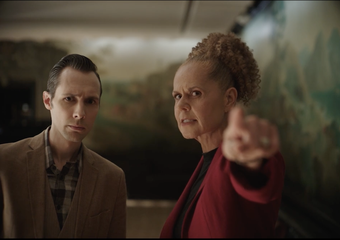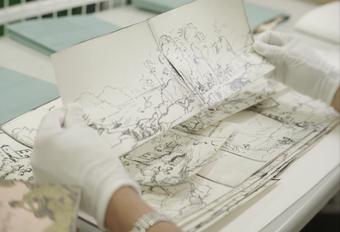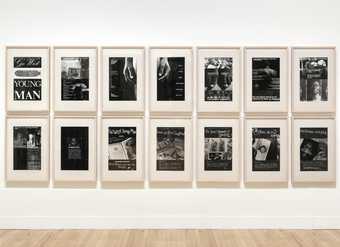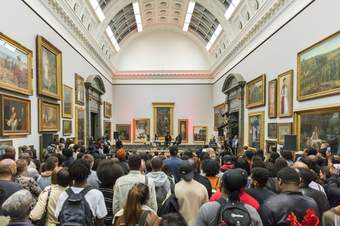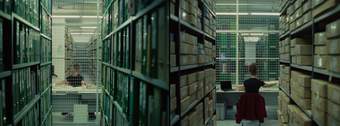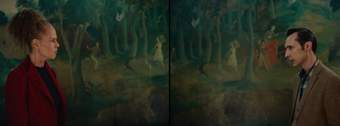This commission brings together two artworks made almost 100 years apart. Both works were produced for the same room in Tate Britain. One is a mural, painted directly on to the walls of the gallery in the 1920s. The other a film installation, commissioned in response to the mural. Together these artworks invite questions about how we engage with artworks from the past.
Keith Piper Viva Voce 2024
In Viva Voce, Keith Piper stages an imagined conversation between artist Rex Whistler and a fictional academic, Professor Shepherd.
‘Viva voce’ is a Latin phrase meaning ‘by word of mouth’. It is the name given to an oral examination in which students are questioned about their work. An academic and lecturer as well as an artist, Piper notes: ‘I was struck by how young Whistler was. As a teacher, I speak to young artists all the time, questioning them about their practice.’ In Viva Voce, Professor Shepherd asks Whistler about his 1927 mural The Expedition in Pursuit of Rare Meats, challenging him on its racist narrative and imagery.
Piper explores Whistler’s other work from the period alongside a pamphlet held in the Tate Archive titled In Pursuit of Rare Meats, Being the Story of the Rex Whistler Murals in the Tate Gallery Restaurant. Written by Whistler’s close friend Edith Olivier (1872–1948), this ‘allegorical story’ provides the narrative for the mural, including parts that were never completed. Piper uses Olivier’s words to examine Whistler’s artistic intentions.
Piper’s film installation also considers the social and political context in which Whistler was working. It weaves together live action, archival photography and film. It includes footage of Black soldiers during the First World War and Black American cabaret singer Florence Mills (1896–1927), who performed in London in 1926. Professor Shepherd asks if Whistler attended the ‘Races in Residence’ displays at the 1924 British Empire Exhibition or joined the 1926 General Strike.
Piper notes: ‘I want to give a sense of how and why the mural exists.’ Viva Voce invites us to carefully examine historical images, the motives of those who made them and the context in which they were produced.

